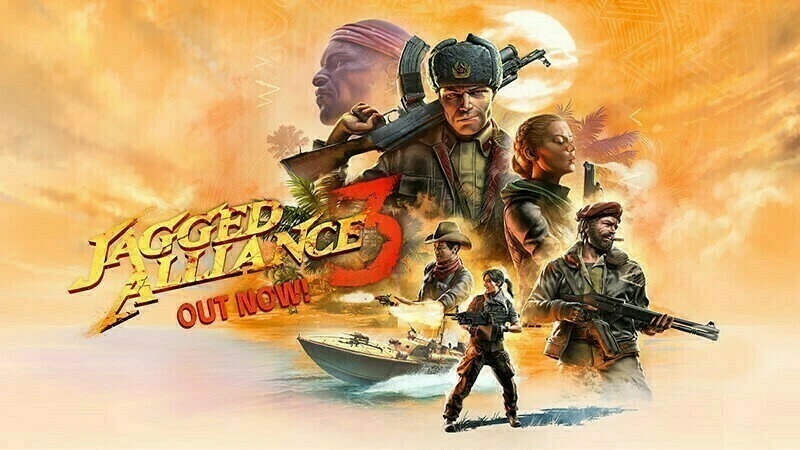VeeSilverball
Also known as @VeeSilverball
- 1 Post
- 12 Comments

 13·1 year ago
13·1 year agoArch is always “latest and greatest” for every package, including the kernel. It lets you tinker, and it’s always up to date. However, a rolling release introduces more ways to break your system - things start conflicting under the hood in ways that you weren’t aware of, configurations that worked don’t any longer, etc.
This is in contrast to everything built on Debian, which Mint is one example of - Mint adds a bunch of conveniences on top, but the underlying “how it all fits together” is still Debian. What Debian does is to set a target for stable releases and ship a complete set of known-stable packages. This makes it great for set and forget uses, servers that you want to just work and such. And it was very important back in the 90’s when it was hard to get Internet connectivity. But it also means that it stays behind the curve with application software releases, by periods of months to a year+. And the original workaround to that is “just add this other package repository” which, like Arch, can eventually break your system by accident.
But neither disadvantage is as much of a problem now as it used to be. More of the software is relatively stable, and the stuff you need to have the absolute latest for, you can often find as a flatpak, snap, or appimage - formats that are more self-contained and don’t rely on the dependencies that you have installed, just “download and run.”
Most popular distros now are Arch or Debian flavored - same system, different veneer. Debian itself has become a better option for desktop in recent years just because of improvements to the installer.
I’ve been using Solus 4.4 lately, which has its own rolling-release package system. Less software, but the experience is tightly designed for desktop, and doesn’t push me to open terminals to do things like the more classical Unix designs that guide Arch and Debian. The problem both of those face as desktops is that they assume up-front that you may only have a terminal, so the “correct way” of doing everything tends to start and end with the terminal, and the desktop is kind of glued on and works for some things but not others.

 82·1 year ago
82·1 year agoMy principle of “blockchain’s fundamental value” is simply this: A blockchain that secures valuable information is valuable.
To break that down further:
- “Valuable information” isn’t data - it’s something that you can interpret, that has meaning and power to affect your actions. So, price speculation taking place on a chain isn’t that valuable in a broad, utilitarian sense, but something like encyclopedic knowledge, historical records, and the like might be. The sense of “this is real” vs “this is Monopoly money” is related to the information quality.
- “Secures” means that we have some idea of where the information came from, who can access it, and whether it’s been altered or tampered. Most blockchains follow the Bitcoin model and are fully public ledgers, storing everything - and just within that model(leaving aside Monero etc.) there are positive applications, but “automatically secure” is all dependent on what application you’re aiming for.
You don’t need to include tokens, trading, finance, or the specific method of security, to arrive at this idea of what a blockchain does, but having them involved addresses - though maybe without concretely solving - the question of paying upkeep costs, a problem that has always dogged open, distributed projects in the past. If the whole chain becomes more valuable because one person contributes something to it, then you have a positive feedback loop in which a culture of remixing and tipping is good. It tends to get undercut by “what if I made scam tokens and bribed an exchange to list them”, the maxi- “we will rule the world” cultures of Bitcoin and Ethereum, or the cynical “VC-backed corporate blockchains”, but the public alt chains that are a bit out of the spotlight with longer histories, stuff like Tezos and NEM/Symbol, tend to have a more visible sense of purpose in this direction - they need to make a myth about themselves, and the myth turns into information by chance and persistence.
What tends to break people’s brains - both the maxis, and people who are rabidly anti-crypto - is that securing on-chain value in this way also isn’t a case of “public” vs “private” goods. It’s more akin to “commons” vs “enclosed” spaces, which is an older notion that hasn’t been felt in our political lives in centuries, because the partnership of nation-states and capital has been so strong as a societal coordinating force - the state says where the capital should go, the people that follow that lead and build out an empire get rewarded. The commons is, in essence, the voice in the back of your mind asking, “Why are you in the rat race? Do you really need an empire?” And this technology is stating that, clearly and patiently: making a common space better is another way to live.
And so there is a huge amount of spam around “ownership”, but ownership itself isn’t really a factor. That’s just another kind of information that the technology is geared towards storing. The social contract is more along the lines that if you are doing good for a chain and taking few risks, a modest, livable amount of credit is likely to flow to you in time. Everyone making “plays” and getting burned is trying to gamble with it, or to advance empire-building goals in a basically hostile environment that will patch you out of the flow of information.

 6·1 year ago
6·1 year agoTo me, a big difference is in the lengthy prelude, which follows the model of TOS, just with an updated production. First the synths layered with strings, which are very 80’s wonder-music(it could be right out of the score for Flight of the Navigator or The Goonies) and then the french horns come in playing a round, which adds a Wagnerian element.
The percussive “march music” elements quoting TMP are subdued in TNG’s arrangement - it’s a less compressed, “punchy” sound, and I believe the mic has been set farther back or they’ve EQ’d out some higher frequencies. Those decisions, plus a few choices of instrumentation like the harp glissandos, tone down the bombastic energy and add a gliding, romantic quality. Again, more like TOS, but updated.

 4·1 year ago
4·1 year agoMy favorite example of “weird camera” is Journey to the Planets. It’s an Atari 800 game with graphics that are more 2600-esque. It’s mostly side view, but the proportions are abstract, like a child’s drawing: the spaceship is about 1/3rd the size of the player sprite, but then as you lift off it shows zoomed out terrain and the sprite is the same size. The game is based around solving adventure game puzzles with objects that are mostly just glowing rectangles, but your way of interacting with the puzzles involves a lot of shooting. Even though there’s so little detail, every room feels “hand-crafted”.
I’m pretty sure the game permanently altered my sense of aesthetics.
 1·1 year ago
1·1 year agoI used to experience FOMO over games in general. There was always some kind of technical advance to marvel at. But that ended in the past decade. Some of it because age, but also because my approach to games changed: it wasn’t that important to see more content, especially when the content was getting relatively less risky and more predictable in most cases, the same kind of “put 3D people in a scene and animate them kind of poorly with bad movie dialogue” stuff over and over.
So I tend to pick up games after there’s a lot of DLC and get the bundle depending on what it adds. The microtransactions are an “almost never”, at most they’re another obstacle to gameplay and I’ll go find something else if it’s too much.
The correct microtransaction for me is how pinball works: I play to see how much I can get out of one credit. If I meet the conditions to get a free credit I may play again, or consider that a win and walk away.
I’ve become comfortable with saying, “it’s not worth it being normal”, and thus am ok with the normie tag, even if I don’t want to turn it into a slur. Normal is a form of social construct that tends to be imposed on us: it’s when the teacher enters the classroom and the class sits down and shuts up, not because they explicitly agreed to, but because it was normalized. There isn’t anything in particular suggesting that normal = good.
And that does have an elitist ring to it, which does upset the goal of equitable outcomes in some ways. There are certain philosophies in which a premise of elitism is assumed, as in, some people just won’t be able to access the necessary understanding to participate, so it’s better to have a gate than to let anyone wander through. This is the view of Leo Strauss and followers - for a really detailed explanation try Arthur Melzer’s book Philosophy Between the Lines.
Even if you don’t read that book(it’s a good book), I would make the case in this way: it’s the difference between online gaming that uses automatic matchmaking, versus a martial arts dojo. Online gaming and toxicity correlate because there is no lower bar on who can play, so all sessions are pushed to the lowest common denominator of cheating, griefing, etc. But someone who participates in martial arts like a gamer gets kicked out of the gym, if the standards are high: an instructor who values students does not let them attempt to eyegouge each other or slam their head on the mat.
Occasionally someone like that will sign up for a tournament, commit an illegal move in the first round, and get themselves disqualified. But they can leave their opponent seriously injured in the process, and maybe end a career. So the standards tend to condition a degree of gatekeeping, respect for others, etc. Not every gym does well at this, and some styles like boxing have a norm of “hard sparring” where full-contact is trained and damage is expected. But predominantly the focus is on getting the techniques and training without destroying yourself or others.
And I do liken the idea of complete access to, essentially, allowing dirty street brawls to be the only kind of sparring, the only way in which you can interact online with strangers.
Martial artists also sometimes use the normie term. They will say it outright: you have to be a weirdo to spend so much time getting beat up and choked out. We can have a gate and still be tough on ourselves to do better.

 101·1 year ago
101·1 year agoEugen is not the person I would trust for good judgment on this because his agenda has always been user growth-centric, so a Fediverse that resembles Facebook would just be a “yay” moment for him - either way he can still end up with a career by leveraging his role with ActivityPub.
That said, I don’t believe EEE works here, because AP evolved in an environment that already had to compete like-for-like with corporate options. You’ll still log in for the rest of the fediverse if it brings you better content than Threads…
…and it has an edge on that, because these spaces are not designed around herding around industrial quantities of users. They have a natural size at which moderators shrug and close the gates if a big instance is too troublesome, because it hurts the quality of the experience for their own users. This peeves instance admins who want the power fantasy of “owning” a lot of low-quality users, but it also basically guarantees defederation with corporate social, because it’s never been able to handle its own moderation problem other than in a “pass-the-buck” way.

 9·1 year ago
9·1 year agoWhen I looked for answers I spent some time exploring “personal organization Youtube” and found a few general principles for myself:
-
Make a real place for everything, not a pile. The difference between a simple tray or bin and a pile is that you can reposition a container without moving every single item in it. Repeating this principle at different scales from very small to very large will quickly organize things into a hierarchy, make it less exhausting to “declutter” and reduce the chance of errors like knocking over stuff and having a cascade.
-
Have more containers than you need. Then you don’t “end up” with a pile forming. But don’t have more containers than is appropriate for the space you’re working with. That’s just a sign of needing to throw out some things.
-
Also consider how you “divide” vs “bind” space together. The two are like ying and yang: we divide up documents into pages, but then we bind them together again with various mechanisms like yarn, binder clips or glue. Sometimes the right answer for making a place is assuming it’s pre-divided, but easing binding.
-
Taking this idea to its extreme, you can cram a huge number of small items into a three-ring binder with various accessories(pencil pouches, clear dividers, etc.) This is a wonderful way to deal with those products that ship with, e.g., an extra screw.
-
You don’t have to invest in expensive containers. Cardboard and leftover food plastic can work on a budget.
-
If throwing things out is triggering your hoarding senses, try making spaces of relatively greater and lower priority: your “favorites” vs the “other stuff”. This sorting helps you now by putting the stuff you like within reach, and it helps later by creating an opportunity to declutter by tossing the whole bin at once.
What are the best containers to invest in for the long run? In my opinion, small zipper bags, desk organizers, pencil bins, and cafeteria trays. If you have a lot of round items, a lazy susan, or variations on that like a makeup organizer.
-

 1·1 year ago
1·1 year agoMeta attempts to federate and every user is immediately swarmed with bots that tell them to stop using Meta, a baby site for babies, forcing Meta to defederate.

 4·1 year ago
4·1 year agoComing soon: rebranding /r/piracy to “pirate cosplay”

 1·1 year ago
1·1 year agoOne direction to take this conversation is to legitimize a formal ads platform and move the technology in that direction. It’s not a concept that has had airtime in federated social(open source, anti-corporate and all) but it fits into the model of enthusiast communities to have a magazine that is “both articles and ads”.

The game has already consumed over 40 hours of my time, and I’ve got plenty more campaign to go. It does just about all the stuff I wanted JA2 to have to make it play faster - combat is faster, looting is faster, inventory is faster. It has a few things that look like X-COM, but it still mostly plays like JA. The early game is the roughest part but things definitely shaped up once I had a team with size, experience and gear.
And the campaign is detailed with a few surprises and plenty of side quests - it does some things to pull the rug on you, which is rude, but rewarding if you play along and accept a few losses(or carefully savescum and go out of your way to avoid triggering timed quests).